Scandinavian design is a popular design style that is characterized by its simplicity, functionality, and minimalism. This design style originated from the Nordic countries, such as Denmark, Norway, and Sweden, and has gained worldwide recognition for its unique and beautiful aesthetic. The Scandinavian design philosophy revolves around the idea of creating a cozy and functional space that is also visually pleasing. In this blog post, we will explore the principles of Scandinavian design and provide you with tips on how to incorporate this design style into your home. Whether you're looking to revamp your living room, kitchen, or bedroom, this guide will help you create a space that is both stylish and practical.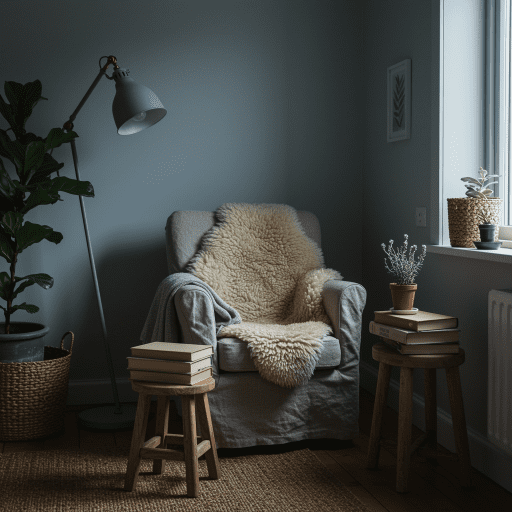
Characteristics of Scandinavian Design
Scandinavian design is characterized by a number of distinctive features that set it apart from other design styles. One of the most prominent characteristics is the use of light and neutral colors, such as whites, grays, and beiges. These colors help to create a bright, airy feel in a space, which is an important element of Scandinavian design.
Another key characteristic of Scandinavian design is the emphasis on natural materials and textures. Wood, stone, and other natural materials are commonly used in furniture and decor, and are often left in their natural state or lightly treated to preserve their natural look and feel.
Scandinavian design also favors simple and clean lines in furniture and decor, with a minimalistic approach to design. Functionality is a key consideration in Scandinavian design, with an emphasis on creating spaces that are both comfortable and practical. Overall, Scandinavian design is known for its elegant simplicity, understated sophistication, and focus on coziness and functionality.
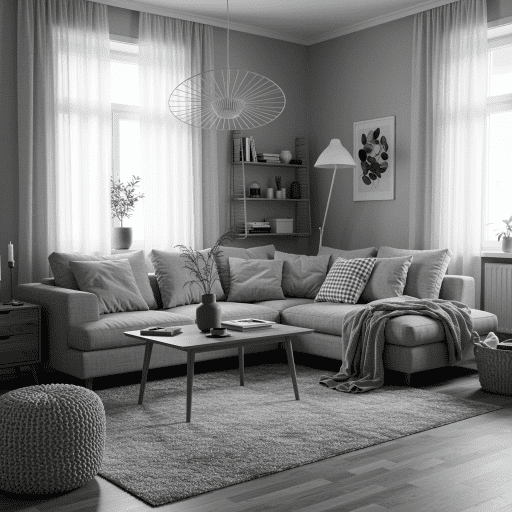
Colors and Textures in Scandinavian Design
Scandinavian design is known for its light, airy feel and emphasis on simplicity. When it comes to colors and textures, this style focuses on creating a cozy and comfortable atmosphere. Light and muted colors, such as whites, greys, and pastels, are often used on walls and in textiles to create a bright and open space. These soft hues provide a neutral background that allows natural textures and materials to take center stage.
Speaking of textures, Scandinavian design places great importance on using natural textures such as wood, wool, and linen. These materials are often left in their natural state, with minimal treatment or finishes, in order to showcase their inherent beauty. In addition to wood, wool, and linen, Scandinavian design also incorporates cozy textiles, such as sheepskin and knit blankets, to create a warm and inviting atmosphere. These textures add depth and dimension to the space, while also adding a touch of hygge, a Danish concept that translates to "coziness."
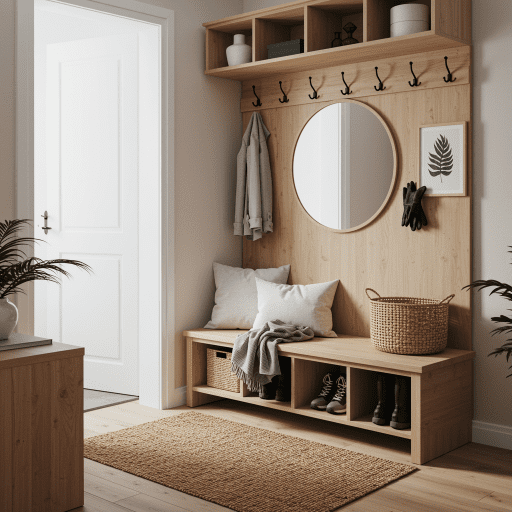
Scandinavian Design Room by Room
A. Living Room
- Furniture and decor options:
- Use of comfortable and simple seating, such as a cozy sofa or armchair
- Incorporation of a minimalist coffee table or side table
- Use of natural materials, such as a wooden accent wall or floor
- Addition of plants or greenery to bring life into the space
- Tips for creating a cozy and functional space:
- Use of soft lighting, such as dimmer switches or floor lamps
- Addition of plush textiles, such as a knitted throw blanket or fluffy rug
- Incorporation of storage options, such as a wooden shelving unit or baskets
B. Kitchen
- Use of natural materials in cabinetry and countertops:
- Incorporation of wooden cabinets or shelving units
- Use of marble or quartz countertops for a sleek and modern look
- Addition of a natural stone or brick backsplash
- Incorporation of functional and practical appliances:
- Use of stainless steel or matte black appliances
- Addition of a functional kitchen island or bar area
- Use of simple and efficient storage solutions, such as hanging pot racks or open shelving units
C. Bedroom
- Importance of simplicity in design:
- Use of a simple and functional bed frame with clean lines
- Incorporation of natural materials in bedding and decor, such as linen or wool blankets
- Addition of a minimalist bedside table or shelf for storage
- Use of natural materials in bedding and decor:
- Use of neutral and muted colors, such as white, grey, or beige
- Addition of a soft and cozy rug for warmth
- Incorporation of natural textures, such as a wooden accent wall or woven basket
D. Bathroom
- Use of natural materials in shower tiles and countertops:
- Incorporation of natural stone or ceramic tiles for a clean and modern look
- Use of marble or quartz countertops for a sleek and functional surface
- Addition of natural wood accents, such as a wooden stool or shelf
- Incorporation of simple and functional fixtures:
- Use of a minimalist and efficient showerhead
- Addition of a simple and functional vanity with storage
- Incorporation of soft and cozy textiles, such as a plush bath mat or Turkish towel.
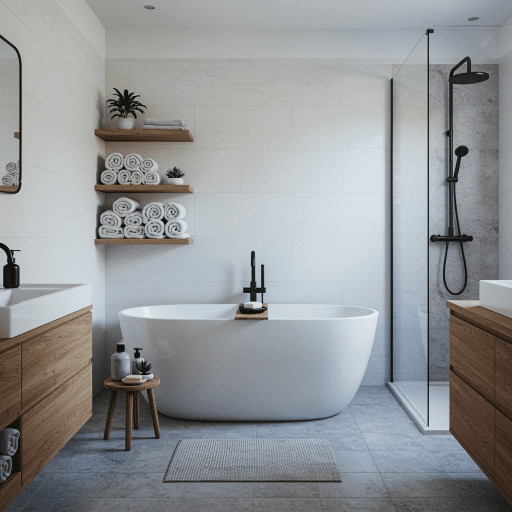
Incorporating Scandinavian Design into Modern Homes
Incorporating Scandinavian design into modern homes can be achieved by mixing it with other design styles, such as mid-century modern or minimalist. While still maintaining the emphasis on key Scandinavian design elements, such as the use of natural materials, simple lines, and light colors. To create a harmonious balance between Scandinavian design and modern design, start by incorporating natural textures and colors into modern furniture and decor. Use neutral colors as a base and add pops of muted colors in accent pieces. Keep the lines of the furniture simple and clean, while still incorporating natural materials such as wood, wool, and linen.
Another way to incorporate Scandinavian design into modern homes is through the use of lighting. Incorporate simple and functional lighting fixtures that use natural materials, such as wood or metal. Overall, the key to successfully incorporating Scandinavian design into modern homes is to keep it simple, functional, and natural. Find a balance between the two design styles that suits your personal taste and creates a cozy and functional space.
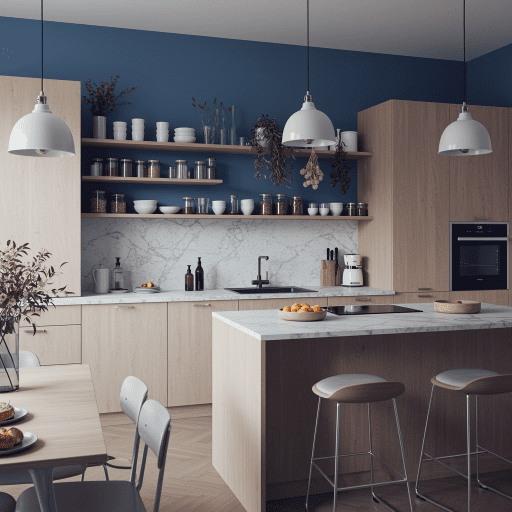
Conclusion
In conclusion, Scandinavian design is a popular and highly sought after interior design style that prioritizes coziness and functionality. By using light and neutral colors, natural materials, and a minimalistic approach, this design style can transform any space into a warm and inviting haven. Incorporating Scandinavian design into your home can be achieved by following the principles of the style and utilizing the key design elements. However, to ensure that the design is executed flawlessly, it is highly recommended to seek the services of a professional interior designer. With the help of a skilled designer like Instyle Deco Paris, you can bring the beauty and simplicity of Scandinavian design to your home, creating a space that is both comfortable and functional.